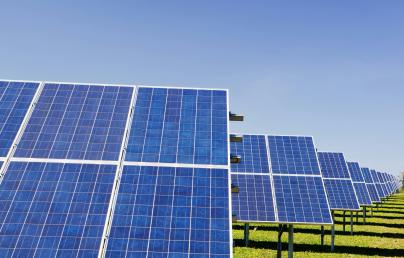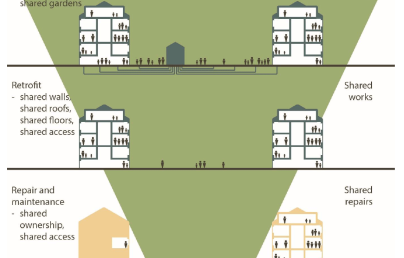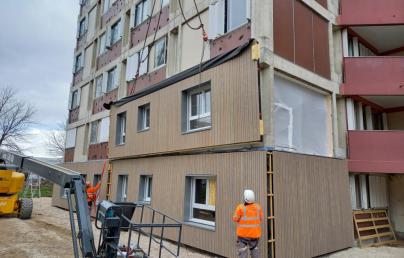Reducing the lifecycle carbon footprint of buildings while fostering innovation in renovation

Reducing the lifecycle carbon footprint of buildings while fostering innovation in renovation
The BPIE report "Whole life carbon and industrial renovation: realising the opportunities to reduce the lifecycle carbon footprint of buildings" focuses on opportunities to leverage both the whole-life carbon impact of renovation and industrial prefabricated renovation solutions and provides recommendations for policymakers aiming to create an optimal policy framework to reduce emissions from buildings while fostering innovation in the renovation sector.
To reach the European climate targets set out in the Fit for 55 package and Renovation Wave, carbon emissions must be cut by 55% compared to 1990 levels. Building construction and operations are responsible for 36% of carbon emissions in the EU. The latest European Commission proposal therefore aims to achieve a 60% emission reduction by 2030 for the building sector, compared to 2015 levels. Significant building improvements and renovations will need to occur to realise this ambitious goal.
While several conventional measures exist for building renovations, innovative solutions are needed to meet climate targets. Industrial prefabrication has the potential to substantially increase the renovation rate, and decrease energy use and emissions. Industrial prefabrication for renovation is the process of producing integrated renovation solutions, such as roof or façade systems, in factories to reduce construction time on-site. To realise the full potential of industrial prefabrication and accelerate the decarbonisation of the building stock, it is important to make use of levers that push industrial prefab solutions and the reduction of whole-life carbon emissions at the same time.
Whole-life carbon considerations and industrial prefabrication are mutually reinforcing in numerous ways. Five promising opportunities to leverage both the whole-life carbon impact of renovation and industrial prefabricated renovation solutions are:
- Innovation in design
- Resource efficiency (transport, streamlined delivery processes, low carbon materials and elimination of waste)
- Quality assurance
- Lifecycle costing
- Circular business models.
This paper focuses on these opportunities and provides recommendations for policymakers aiming to create an optimal policy framework to reduce emissions from buildings while fostering innovation in the renovation sector.
be_wlc_final.pdf
English (5.27 MB - PDF)

